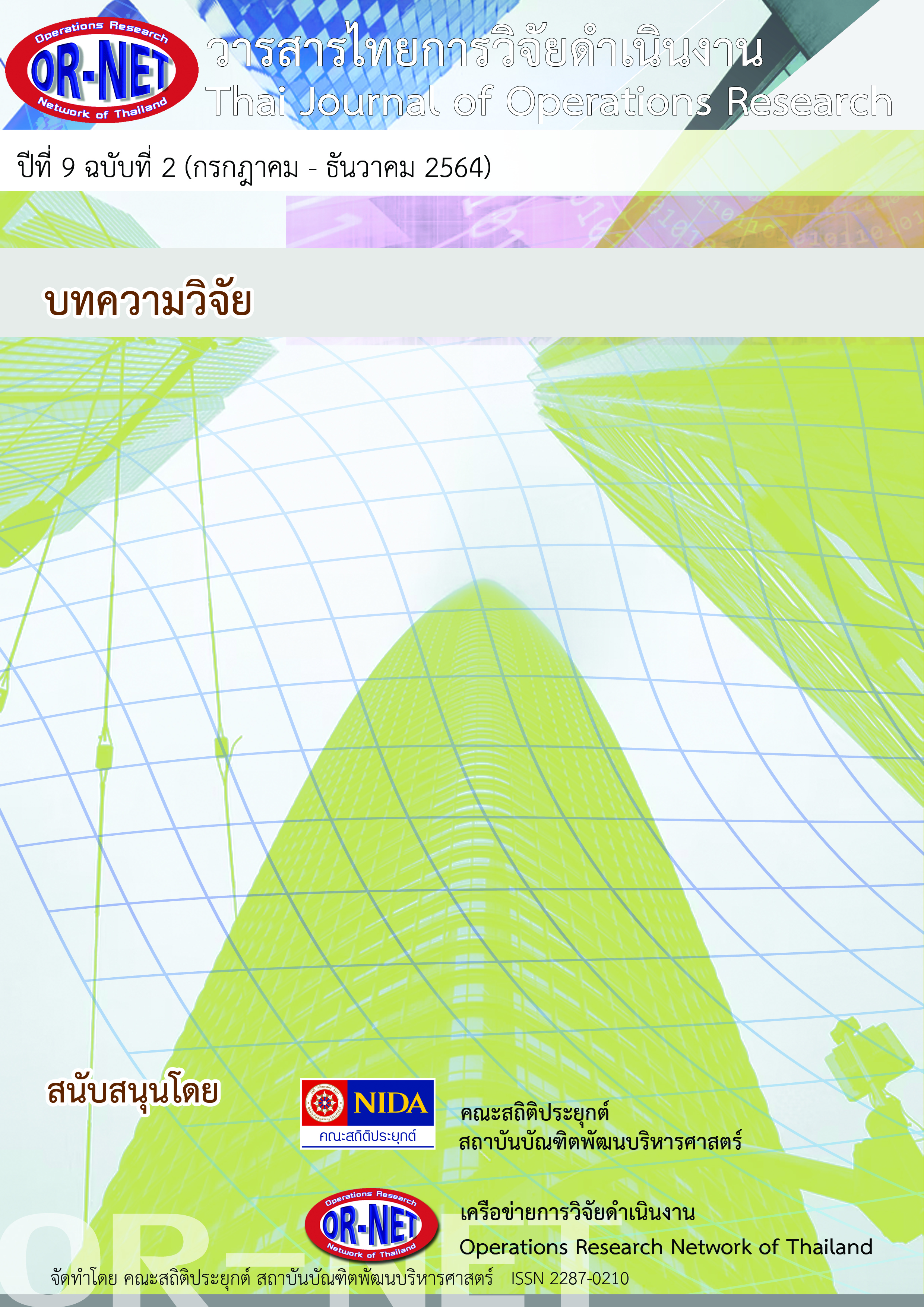Application of Bi-level Decision-Making Technique to manage Inventory and Transportation System: Case Study of Wholesaler in Chiang Mai Province
Keywords:
Inventory Management; Multi-Criteria Inventory Classification; Bi-level decision-making, transportation schedulingAbstract
The objective of this research was to apply a bi-level decision-making technique to manage inventory system and transportation scheduling in a case study of a wholesaler in Chiang Mai Province. The first level of the decision-making is to manage inventory system. Techniques, including a Multiple Criteria Decision-Making (MCDM) and an Analytical Hierarchy Process (AHP), were used to classify the products of the case study into three groups, including A, B, and C where products in group A are the most important while products in group B and C are less important, respectively. The appropriate inventory ordering policies for each product group were then selected considering their importance and value. The second level of the decision-making is to manage a transportation scheduling based on the importance and inventory ordering policies of each product group and using a Priority Queuing (PC) technique. The results of this research were compared with the actual data of the case study. It showed that the application of bi-level decision-making to manage inventory system and transportation scheduling of the case study can reduce inventory management cost by approximately 19.69 percent and the number of transportation cycles 12 cycles in three months.
References
[2] ธนิต โสรัตน์. (2554) การพัฒนาระบบโลจิสติกส์ของประเทศไทย ปี 2553/2554 [ออนไลน์]. ได้จากhttp://logisticscorner.com/index.php?option=com_content&view=article&id=2259:--25532554&catid=40:logistics&Itemid=87.
[3] พรวิสา ทาระคำ และ ชมพูนุท เกษมเศรษฐ์. (2559) การจัดการสินค้าคงคลังสำหรับกรณีร้านขายส่ง. การประชุมวิชาการด้านการวิจัยดำเนินงานแห่งชาติ ประจำปี 2559. วันที่ 24-25 มีนาคม 2559, หน้า 57-62.
[4] Tharakhum, P. and Kasemsert, K. (2015) Application of Bi-level Decision-Making Model in Logistic Activities Management for Wholesaler. Proceeding of 15th Thai Value Chain Management and Logistics Conference (Thai VMCL 2015), pp. 940-945.
[5] Tsai, C.Y. and Yeh, S.W. (2008) A multiple objective swarm optimization approach for inventory classification. International Journal of Production Economics, 114, pp. 656-666.
[6] Vencheh, A.H. and Mohamadghasemi, A. (2001) A fuzzy AHP-DEA approach for multi-criteria ABC inventory classification. Expert System with Applications, pp. 3346-3352.
[7] ชมพูนุท เกษมเศรษฐ์. (2559) ทฤษฎีการจัดการพัสดุคงคลังและการประยุกต์ใช้สำหรับตัวแบบพัสดุคงคลังดีเทอมินิสติคแบบต่อเนื่อง, สำนักพิมพ์มหาวิทยาลัยเชียงใหม่.
[8] Kasemset, C. and Pintaruean, E. (2017) Application of Job Sequencing Policies in Refrigerated Truck Sequencing: A Case Study. Proceeding of 2017 International Conference on Industrial Engineering Management Science and Application (ICIMSA), pp. 145-149




